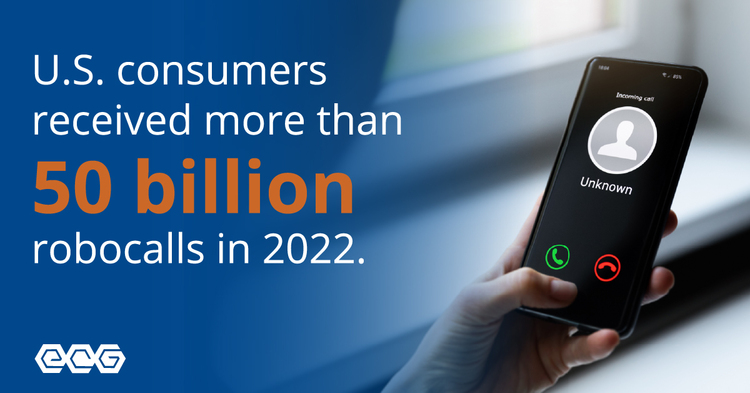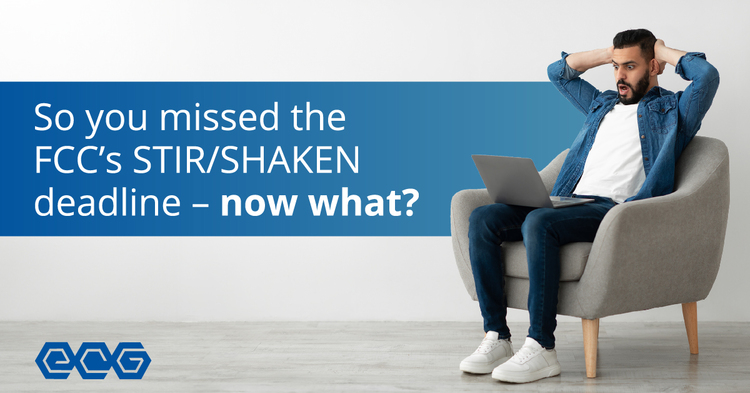In the first half of 2021, American consumers received 26.5 billion robocalls.1 That's 80 calls for every man, woman, or child in the United States! Unwanted robocalls are one of the top consumer complaints received by the Federal Communication Commission (FCC). As per the law, telecom providers, carriers, and enterprises functioning on VoIP systems need to integrate appropriate call authentication frameworks.
The Secure Telephone Identity Revisited (STIR)/Signature-based Handling of Asserted Information Using toKENs (SHAKEN) framework verifies and signs phone calls through digital certificates obtained from a certificate authority. The system requires providers to detect and identify spoof calls and possibly stop them before they reach the consumers. While STIR involves authenticating caller ID within SIP, SHAKEN refers to the end-to-end architecture for caller ID authentication utilizing STIR in the telephone network.
FCC Compliance Law for Robocall Mitigation
FCC mandates providers to execute STIR/SHAKEN in the IP portions and certify in the Robocall Mitigation Database to assure full implementation of STIR/SHAKEN or a similar robocall mitigation program. Telecom service providers looking for certification need to describe logical steps that they are willing to carry out to avoid illegal robocall traffic.
The FCC is taking these steps to prevent unwanted robocalls and spam calls and eventually restore Americans' trust in their everyday phone calls. To comply with STIR/SHAKEN, providers need to ensure functionality and reliability of all the required components for caller identity authentication, signing, verification, and certificate management. This process requires in-house technical expertise on the subject or additional assistance from a technological partner such as ECG.
And beyond STIR/SHAKEN, the FCC makes it clear that voice service providers in the United States must implement analytics to detect potential illegal or unwanted calls originating from their own networks. Once illegal traffic is found, service providers must stop it! Service providers cannot simply wait for a complaint before investigating calling behavior from their own customers. Automatic analytics operating in the network must report robocalling behavior and use of unvalidated alternate telephone numbers for outbound calls as these are common indicators for robocalling. Implementing this technology effectively can help protect a voice service provider from enforcement action.
It Benefits Your Customers, Too
The laws and regulations on Robocall mitigation are limiting the robocalls flowing out to other victims. But the same robocall detection technology can be applied to detect and protect the customers and users of the network. Suspicious calls can be labeled as "Spam Likely", or routed to a "Voice Captcha" without bothering the recipient. But be aware that each user needs to have the ability to opt out of any call-blocking system setup in a network like this. And unlike the outbound robocall mitigation, there are opportunities for revenue generation in blocking Spam Calls, allowing service providers to deliver premium services to advanced features.
ECG Saves Momentum Massive Costs With STIR/SHAKEN Guidance
A nationwide voice service provider, Momentum, approached ECG at the onset of their STIR/SHAKEN implementation course. Apart from a set of peculiar problems, the service provider was concerned about the burden of understanding the FCC’s complicated protocols for mitigating robocalling. With dependable engineering expertise, market knowledge, and the ability to help achieve compliance without wasting time and money, ECG carried out this task smoothly.
Here’s an excerpt from the case study highlighting how we solved some of Momentum’s major challenges:
- Problem: Identifying gaps in compliance requirements and the essential needs to meet.
- Solution: Ensuring compliance by referring to legal briefs and bridging gaps between legal, engineering, and FCC regulatory teams.
- Problem: Complicated sales process as a result of having multiple software vendors.
- Solution: Checking and determining the best software options from vendors before starting the formal sales process.
- Problem: Minimizing time consumption and reducing cost without affecting performance or being non-compliant.
- Solution: Providing step-by-step guidance and expert advice for saving the maximum amount of time and money.
Read the entire case study here.
Rely On ECG for Successful STIR/SHAKEN Integration
With reliable compliance engineering, ECG can provide you with proper guidance for critical concerns such as principled call routing, ethical call recording, and E911 compliance. We maintain and build voice, collaboration, and data networks for service providers and large enterprises worldwide. At ECG, we bring the best technical expertise for systematic and reliable robocall detection and mitigation, and we assist, support, and train teams of all sizes.
Contact us to learn more about how our expertise can help you with robocall mitigation by implementing STIR/SHAKEN, or schedule a call with us today!
Source:
-
https://robocallindex.com/history/time


